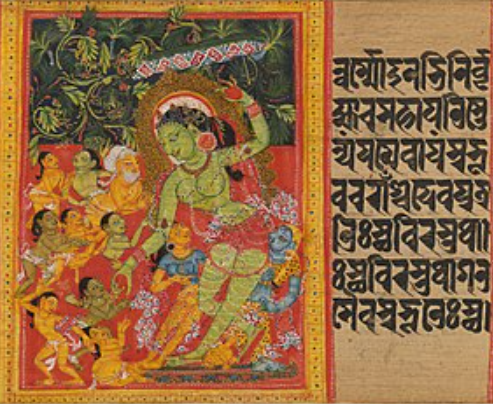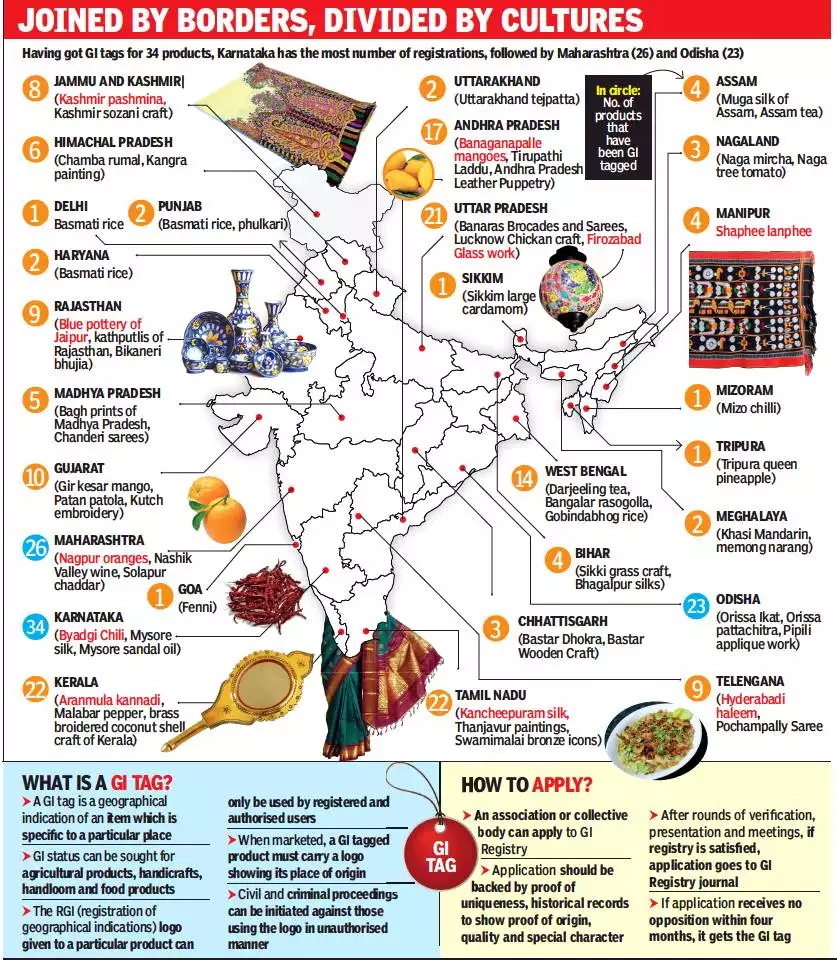GI Tag to Majuli masks, Manuscript and Narasapur Crochet Lace Craft | 06 Mar 2024
For Prelims: Majuli Masks, Majuli Manuscript Painting, Crochet Lace Craft, Geographical Indications (GI) tag
For Mains: Intellectual Property Rights, Protection of Traditional Knowledge
Why in News?
The traditional crochet lace craft of Narasapur in Andhra Pradesh receives a Geographical Indications (GI) tag to preserve its unique identity amidst competition from machine-made lace from China.
- Similarly, Majuli masks and manuscript painting in Assam gain GI recognition, enhancing their cultural significance and safeguarding against decline.
- These GI tags aim to rejuvenate and promote traditional crafts, ensuring their continued legacy and heritage preservation.
What are the Key Highlights About Narasapur Crochet Lace Craft?
- Narasapur Crochet Lace Craft:
- The crochet lace craft originated in 1844 and endured challenges like the Indian famine (1899) and the Great Depression (1929). By the early 1900s, more than 2,000 women were involved in lace crafting in the Godavari region, highlighting its cultural importance.
- The craft involves transforming thin cotton threads into intricate artefacts using delicate crochet needles of varying sizes.
- Artisans use a single crochet hook to create loops and interlocking stitches, forming delicate lace patterns.
- Narsapur's hand-made crochet industry produces a diverse range of products made of lace— garments, home furnishings and accessories including Doilies, Pillow covers, Cushion covers, Bedspreads, Table-runners, Table cloths, Hand purses, Caps, Tops, Stoles, Lampshades, and Wall hangings.
- Narsapur's crochet lace products find their way to global markets, with exports reaching destinations such as the UK, USA, and France.
- Geographical Indication (GI) Tag:
- The Department of Promotion of Industry and Internal Trade (DPIIT) under the Ministry of Commerce and Industry registered the craft in the Geographical Indications Registry (GIR), certifying that the craft is geographically limited to 19 mandals in West Godavari and Dr. B.R.Ambedkar Konaseema districts in the Godavari region.
- Narsapur and Palacole are the major trade points for lace products in West Godavari district. In Konaseema region, Razole and Amalapuram are known for the craft.
- The Department of Promotion of Industry and Internal Trade (DPIIT) under the Ministry of Commerce and Industry registered the craft in the Geographical Indications Registry (GIR), certifying that the craft is geographically limited to 19 mandals in West Godavari and Dr. B.R.Ambedkar Konaseema districts in the Godavari region.
- Challenges Faced by Narasapur Artisans:
- The craft market has been stagnant since the Covid-19 pandemic, resulting in a lack of new orders and decreased production.
- While over 15,000 women are associated with the craft, only around 200 are actively involved in regular production.
- Machine-made lace products from China have dominated the market, posing a significant threat to the demand for Narasapur lace products.
What are Majuli masks and Majuli Manuscript Painting?
- Majuli Masks:
- Majuli masks are intricately crafted masks made by hand using traditional techniques.
- The handmade masks are traditionally used to depict characters in bhaonas (a traditional form of entertainment, with religious messages), or theatrical performances with devotional messages under the neo-Vaishnavite tradition, introduced by the 15th-16th century reformer saint Srimanta Sankardeva.
- The masks can depict gods, goddesses, demons, animals and birds — Ravana, Garuda, Narasimha, Hanuman, Varaha Surpanakha all feature among the masks.
- Made from a variety of materials including bamboo, clay, dung, cloth, cotton, and wood, the masks can vary in size from covering just the face to encompassing the entire head and body of the performer.
- Traditional practitioners are modernizing Majuli mask-making by moving beyond the confines of sattras (Monastery) to embrace contemporary contexts.
- Sattras were founded by Srimanta Sankardev and his disciples to serve as centres of religious, social, and cultural reform.
- Majuli, with its 22 sattras, is a hub for these cultural practices. The mask-making tradition is predominantly found in four sattras: Samaguri Sattra, Natun Samaguri Sattra, Bihimpur Sattra, and Alengi Narasimha Sattra.
- Majuli Manuscript Painting:
- The manuscript paintings of Majuli are a form of religious art closely linked to the island's Vaishnavite culture, centred around worship.
- One of the earliest examples of this art form is attributed to Srimanta Sankardev, depicting the Adya Dasama of the Bhagwat Purana in Assamese. It continues to be practised in every sattra in Majuli.
- Majuli Manuscript Painting are inspired by the Pala school of Painting art.
- Pala art refers to the style of Buddhist art that developed in the Pala Empire of eastern India (8th-12th centuries). It is characterized by its vibrant colors, detailed work, and emphasis on religious themes.
UPSC Civil Services Examination, Previous Years Questions (PYQs)
Prelims
Q. Which of the following has/have been accorded ‘Geographical Indication’ status? (2015)
- Banaras Brocades and Sarees
- Rajasthani Daal-Bati-Churma
- Tirupathi Laddu
Select the correct answer using the code given below:
(a) 1 only
(b) 2 and 3 only
(c) 1 and 3 only
(d) 1, 2 and 3
Ans: (c)
Q. India enacted the Geographical Indications of Goods (Registration and Protection) Act, 1999 in order to comply with the obligations to (2018)
(a) ILO
(b) IMF
(c) UNCTAD
(d) WTO
Ans: (d)
Mains
Q. How is the Government of India protecting traditional knowledge of medicine from patenting by pharmaceutical companies? (2019)




